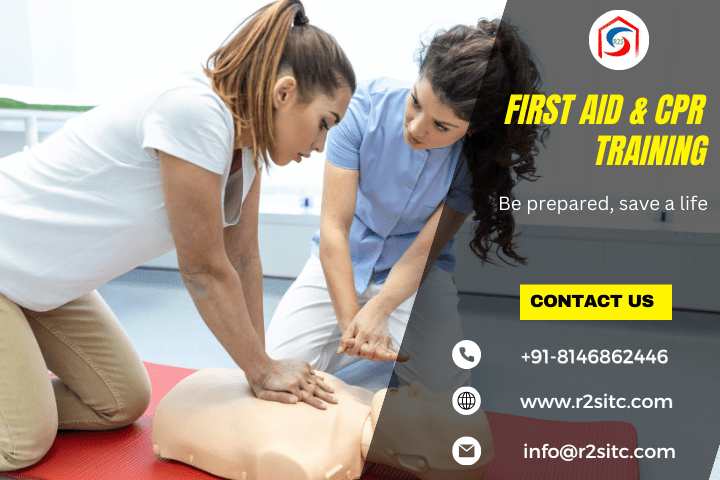In today’s fast-paced world, emergencies can happen when least expected. Whether it’s a sudden cardiac arrest, choking incident, or drowning, knowing how to perform Cardiopulmonary Resuscitation (CPR) can make the difference between life and death. CPR Certification equips individuals with the knowledge and skills needed to respond effectively in such critical situations. In this blog post, we’ll explore why CPR Certification matters, its importance in saving lives, and how you can get certified to be a life-saver.
Why CPR Certification Matters
- Life-Saving Skills: CPR Certification provides individuals with life-saving skills to respond confidently and effectively during emergencies. Being able to perform CPR can significantly increase the chances of survival for someone experiencing sudden cardiac arrest or other medical emergencies.
- Immediate Response: In medical emergencies, every second counts. CPR Certification ensures that individuals are trained to provide immediate care until professional help arrives. Prompt initiation of CPR can help maintain blood circulation and oxygenation to vital organs, improving the chances of survival.
- Community Resilience: CPR Certification contributes to building a resilient community by empowering individuals to act as first responders in emergencies. By increasing the number of trained bystanders, communities can create a safety net of support, enhancing overall emergency response capabilities.
- Legal Protection: In some jurisdictions, Good Samaritan laws provide legal protection to individuals who provide emergency assistance in good faith, including CPR. CPR Certification offers individuals peace of mind, knowing that they are prepared to act within the scope of the law during emergencies.
- Professional Requirements: CPR Certification may be a requirement for certain professions, such as healthcare providers, lifeguards, teachers, and childcare workers. Having a valid CPR Certification ensures compliance with workplace regulations and enhances professional credentials.
Importance of CPR Certification in Saving Lives
- Sudden Cardiac Arrest: Sudden cardiac arrest (SCA) is a leading cause of death globally, claiming millions of lives each year. CPR Certification enables individuals to recognize the signs of SCA and intervene promptly with chest compressions and rescue breaths, increasing the likelihood of survival.
- Choking Incidents: Choking is another common medical emergency that requires immediate intervention. CPR Certification teaches individuals how to perform abdominal thrusts (Heimlich maneuver) to dislodge obstructions from the airway and restore breathing.
- Drowning: Drowning is a significant cause of accidental death, especially among children. CPR Certification equips individuals with the skills to perform rescue breathing and chest compressions on drowning victims, maintaining oxygenation until professional help arrives.
- Traumatic Injuries: CPR Certification also covers basic first aid techniques for treating traumatic injuries such as severe bleeding, head injuries, and fractures. Prompt intervention can help stabilize injured individuals and prevent further complications.
How to Get Certified in CPR
- Choose a Certification Program: There are several organizations that offer CPR Certification courses, including the American Heart Association (AHA), American Red Cross, and National Safety Council. Research different programs to find one that suits your needs and schedule.
- Attend a Training Course: CPR Certification courses typically include both online and in-person components. Attend a training course conducted by certified instructors, where you’ll learn CPR techniques, practice skills on manikins, and receive feedback and guidance.
- Complete Skills Assessment: After completing the training course, you’ll need to pass a skills assessment to demonstrate proficiency in CPR techniques. The assessment may include performing CPR on adult, child, and infant manikins, as well as demonstrating other first aid skills.
- Pass Written Exam: In addition to the skills assessment, you’ll be required to pass a written exam covering CPR theory, anatomy and physiology, and emergency response protocols. Study course materials thoroughly to ensure success on the exam.
- Receive Certification: Upon successful completion of the training course and assessment, you’ll receive your CPR Certification card, valid for a designated period (typically two years). Keep your certification current by attending refresher courses and staying updated on CPR guidelines and protocols.
Get CPR Certified with R2SITC in Hoshiarpur
R2SITC offers CPR Certification courses in Hoshiarpur, designed to equip individuals with the knowledge and skills needed to respond confidently and effectively in medical emergencies. Our certified instructors provide hands-on training, ensuring participants are prepared to handle a wide range of emergency situations. Don’t wait – join R2SITC’s CPR Certification course and become a life-saver in your community!


